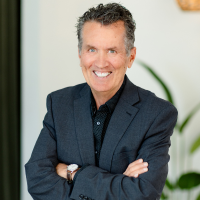News judgment: A tale of two Times stories
Straining for the negative makes for head-scratching headlines

A headline like “Studies Show Little Benefit in Supplements” in The New York Times, might make you think the same old criticisms are coming, with “supplements aren’t regulated” near the top of the list.
But when you read a little farther into the story that ran on Nov. 14, you might also think the headline writer and the reporter haven’t spoken in years.
If you read yesterday’s follow-up story—“Which Supplements, if Any, May Be Worth Your Money”—you might be even more confused. You might start to wonder what’s going on at the Times.
Last week’s story, by health reporter Jane Brody, took up the Journal of the American Medical Association study released last month that reported supplement purchasing habits remaining basically static between 1999 and 2012. It was a fairly “so what?” study and we wrote about it on Oct. 12 only to take issue with the accompanying editorial by supplements critic Pieter Cohen who sees a soapbox around every corner.
Brody does suggest supplements “are often of questionable value,” and she goes on to explain the basics of DSHEA and the charge that some supplements have been found “no better than a placebo.”
But then she does something that might be surprising to see in the same newspaper that broke the story of the New York attorney general investigation into herbal supplements and trends decidedly negative in its coverage of the industry.
She talks about the supplements she takes.
And why she takes them.
“Some supplement users distrust evidence suggesting they have no benefit, which is why I still take glucosamine/chondroitin despite the results of the best study to date that found it offered no relief from knee arthritis. My arthritis has progressed minimally in the decades I’ve been on it, and having experienced no side effects, I’m unwilling to argue with apparent success.”
She even pulls out the few positive statements Cohen makes in the editorial, including his admission that “Certain combinations of nutrients can help some medical conditions.”
And she ends with the same statement that every responsible person in the industry would say. That caution is wise and talking to your doctor is important.
But back to that headline.
The only “news” in the story is really the JAMA study, and the researchers weren’t really looking at efficacy. The study isn’t mentioned until the fourth paragraph, which raises the question of why the story was written at all. It’s not like the Times is lacking for negative coverage of supplements.
One can imagine any number of storylines that resulted in the headline and Brody’s piece, perhaps the most plausible being that Brody thought the study was worth covering but her editor pushed her to find a negative slant. Perhaps it got rewritten after she went home.
That’s where the news judgment raises questions. If a study says purchasing habits are largely stable, despite the negative news coverage and scientific questioning, then explore the “why” of that. The why probably isn’t too different from what Brody explains of her own habits. Supplements work for people. That’s why they buy them. That’s why they keep buying them.
That’s why the editor who wrote the headline should have read the story.
Which takes us to this week when, once again, we wish we could listen in on whatever debate is occurring in the newsroom. In the Nov. 21 story, “Which Supplements, if Any, May Be Worth Your Money,” Brody wades back into the matter with more of her personal attitude—“I am not immune to wishful thinking that an over-the-counter vitamin, mineral or herb may help to keep me healthy or relieve some distress without having to see a doctor”—and fills us in on her use of melatonin, magnesium, glucosamine-chondroitin and fish oil.
Brody goes through the standard study vs. study rundown for a number of ingredients before returning again to the word “caution,” a word that nobody on the supplement industry side of the public debate would argue against. But again, the story brings us back to the what Brody stated in the first article. Studies aside, these products seem to work for some people. She notes that studies can’t prove that magnesium supplements help with muscle and leg cramps but adds “they seem to have helped me and a friend of mine.” She notes that there is insufficient evidence on turmeric but talks about a friend who used it to combat plantar fasciitis “enabling her to once again jog and play tennis.”
Two weeks in a row, Brody Appears to have inserted balance into a Times story about supplements, but it almost feels like she had to work to slip it in. In the end, she tells the story that consumers tell over and over again: that the products work for them and that medicine, science and nutrition are not one-science-fits-all propositions.
About the Author
You May Also Like





